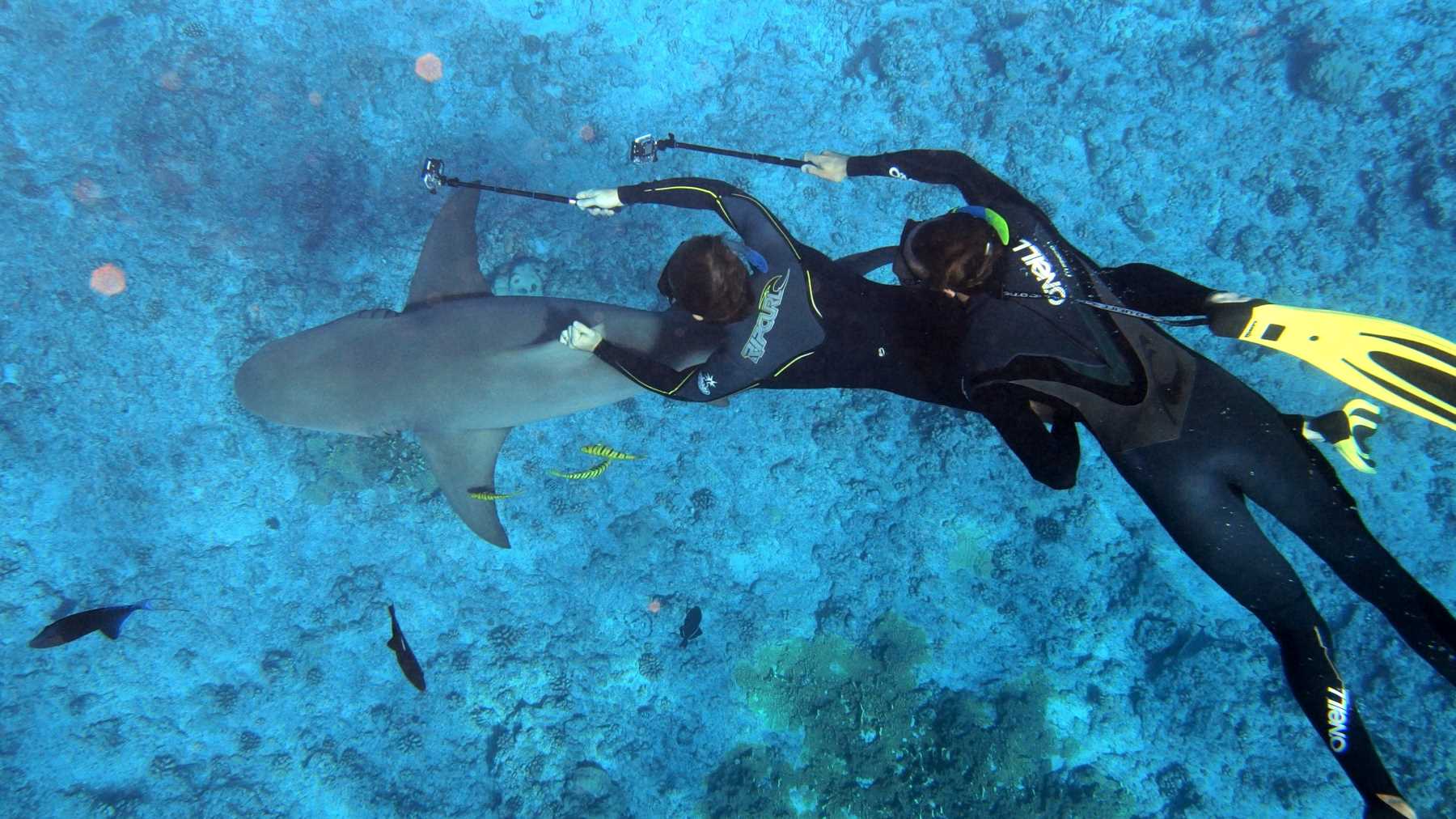
7 Interesting research methods that scientists use to study sharks
For many years, researchers have been applying new and improved techniques to study sharks. But how exactly do they manage to research one of the ocean’s most notorious apex predators?
The knowledge that scientists gain from researching sharks contributes to our broader understanding of the various shark species in our oceans. What’s more, we learn about and understand shark characteristics, movement patterns and behaviours better. Here are some of the research methods used by universities and research centres across the world.
Shark tagging
This is the practice of catching specific species of sharks and attaching a tracking tag to the dorsal fin. After this, the shark is released. This tag sends satellite or radio transmissions to the monitor or other device used by the research team. Therefore, scientists are able to see where the shark is at any given moment and can track its movement and migration patterns. This research method is also used to get an idea of the number of sharks in a specific location. It’s the most widely use research technique to monitor and study shark numbers, movements and behavioural patterns. The Tagging of Pelagic Predators project is one example of tagging research used by an institute.
Underwater videography
For basic observation of the appearance, movement and characteristics of sharks, high-quality underwater footage serves as a helpful resource. For this, shark researchers usually require a SCUBA qualification as they often have to spend hours underwater for sufficient observation time. Remote-controlled underwater video devices are also used for the purpose of gathering shark data. With underwater video footage, scientists can see what sharks look like, how they adjust according to age or environmental changes, how they act around prey or other predators, and much more.
Aerial survey
This is another helpful method of recording the numbers and movements of sharks within a certain area. Some shark researchers use drone cameras, though helicopters and other aerial methods are also used. From the air, it’s easier to spot sharks and note down observations of the behaviours and natural habitat of sharks that dwell near the ocean’s surface. Imagine flying over the ocean in a helicopter as part of your job, to track down and observe sharks! Both underwater video surveys and aerial surveys are classified as non-invasive research techniques that can help scientists to research the ecology and biodiversity of sharks within a certain area.
Download FREE eBook with 70 verified grants and scholarship opportunities to fund your shark research project

Migration tracking from underwater
This is a fairly new method of tracking shark movement. Scientists have found a way to install tracking devices underwater on seamounts (underwater mountains) that can monitor and document migration patterns of tagged sharks within a certain area or region. This method is being used at the moment to specifically track the migration of endangered sharks, namely silky sharks and hammerheads, between Costa Rica and the Galápagos Islands.
Literature study
This is the more boring side to shark research, but also an essential one. This entails gathering all known information on sharks that you can find from all accessible academic resources. If you’re getting a degree in shark biology, you need to write a large research thesis or paper with a whole chapter of your extensive study of existing literature. This includes results from previous studies conducted by shark researchers. For each piece of information you include from an article or thesis, you need to write down the reference for it – the author of the original source, the date it was published, etc.
This literature study is always done first in the shark research process, so that you know everything that is already known about the shark species before you conduct your brand new research. Doing a literature study will show you whether your theory about sharks has already been proven (or proven wrong), or whether your study will open the door to entirely new research and facts about sharks.
eDNA survey
eDNA stands for environmental DNA. This research method entails filtering and assaying water samples for a certain shark species’ DNA fragments. It has become a more frequently used research method to track and monitor shark numbers in a specific area, because of its reliability and cost-effectiveness. For example, this method is used by the Save Our Seas Foundation in a global sawfish survey project.
Forensic research
Scientists use this method to identify shark carcasses and dried shark fins from fisheries and shark fin markets in Asia. This enables researchers, like those from the Guy Harvey Research Institute, to conduct research on the specific shark species being targeted by fisheries for the shark fin trade. This, in turn, could lead to valuable information and education on shark conservation and the identification of vulnerable shark species.
These are only seven of many research techniques used by shark scientists across the world. Shark research is an exciting field filled with action, awesome scientific breakthroughs and important wildlife knowledge. There are various reasons you should enter the wonderful world of shark research. If you’re interested in starting off your career with some real-life experience, join our Shark Development program and boost your chances of breaking into the industry.
Discover how to be a Great White Shark research Intern in South Africa



 Let us know where we can send fundraising opportunities. In the meantime download our eBook featuring 18 scholarship awards for study-abroad adventures
Let us know where we can send fundraising opportunities. In the meantime download our eBook featuring 18 scholarship awards for study-abroad adventures  Let us know where we can send fundraising opportunities. In the meantime download 40 great fundraising ideas eBook right here
Let us know where we can send fundraising opportunities. In the meantime download 40 great fundraising ideas eBook right here  Let us know where we can send you more fundraising insights to help jump start your career as a marine scientist
Let us know where we can send you more fundraising insights to help jump start your career as a marine scientist